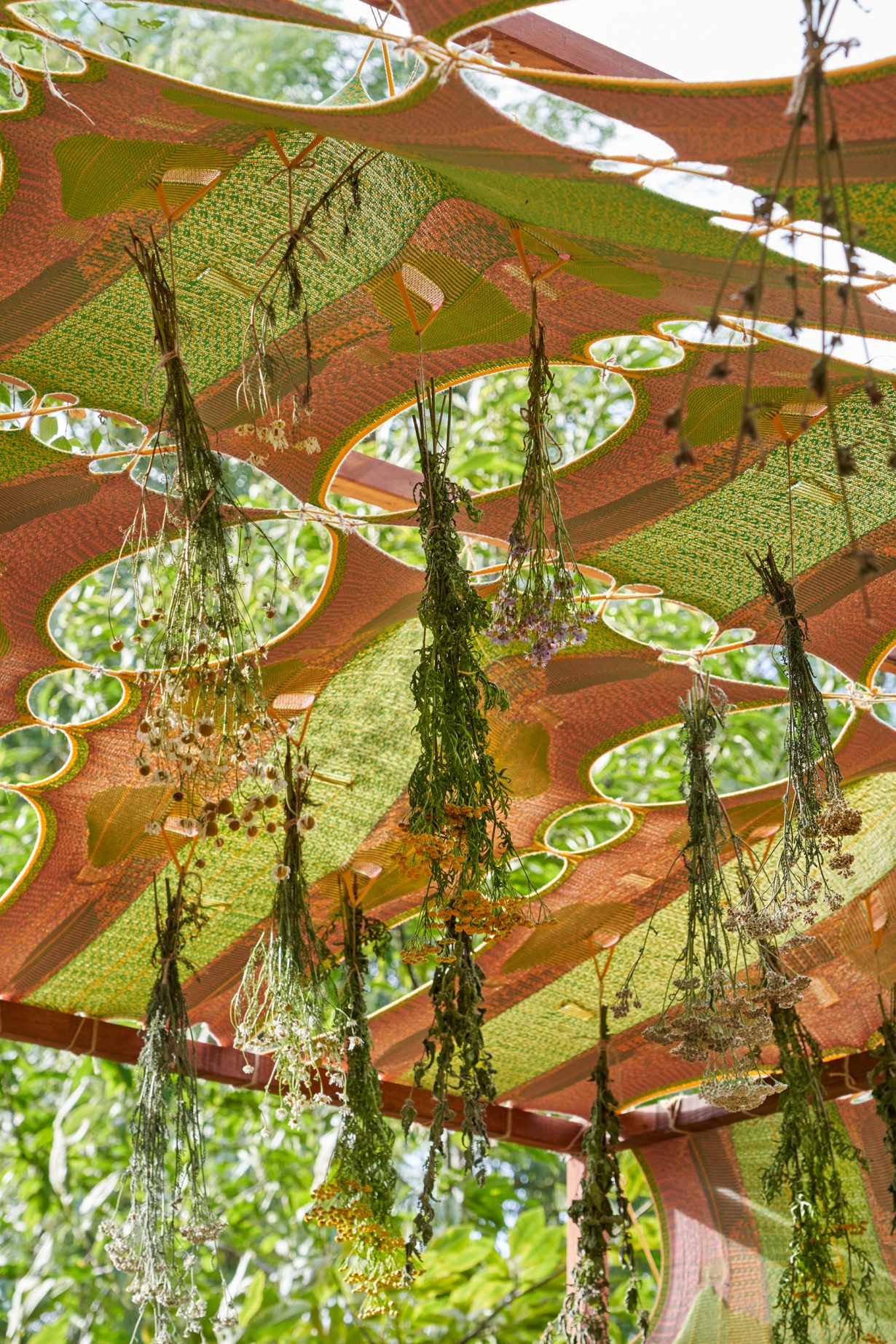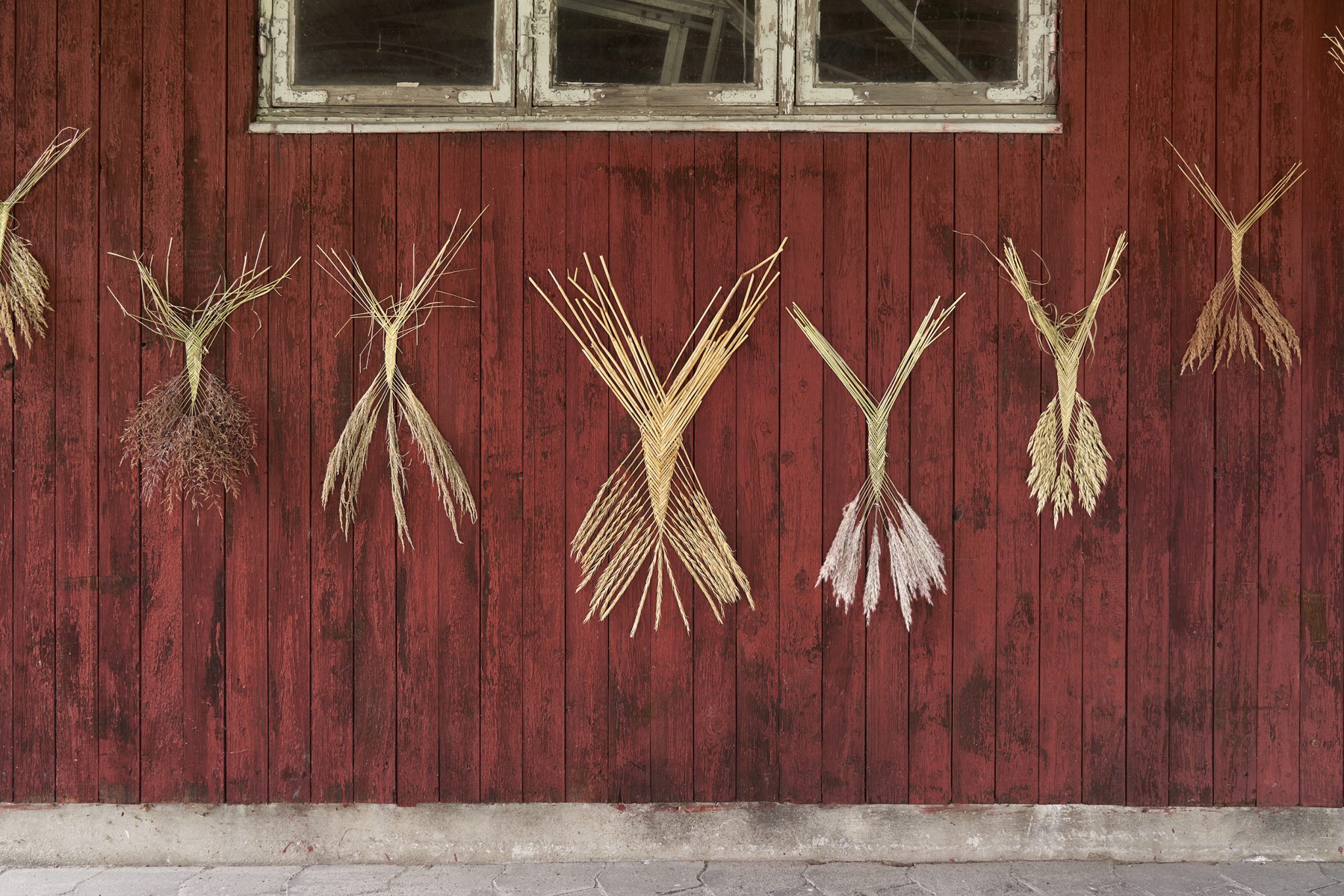Is the cultural turn towards the pagan and the occult really just escapism in disguise?
“Place your forehead against the tree’s trunk… If the tree wants to interact intimately with you, then ask for consent…” I’m sitting on a bench in Roskilde Hospital’s Sankt Hans Gardens, looking out over the fjord that bounds the small Danish city’s eastern edges. The sun is high and a mild late-summer breeze rustles the woods behind me. Looping on speakers hidden in those trees is Annie Sprinkle, Beth Stephens and Dann Disciglio’s We Love You Forest (2024): a collaborative, three-part, ten-minute sound work, an arboreal erotics of whispers, moans and giggles. The part I’m listening to is titled ‘How To Make Love To Trees’, an instruction manual of sorts, and the most recent iteration of Sprinkle and Stephens’s ongoing ‘Eco-sex Movement’ project (2008–).
We Love You Forest is part of I mørket beder vi solen huske os (In the Darkness, We Ask the Sun to Remember Us), a group exhibition organised by Roskilde’s Museet for Samtidskunst that installs works by 13 artists around the psychiatric hospital’s sprawling gardens. Running from late summer until the winter solstice on 21 December, the show plays with ideas of nature, seasonal transformation and cycles. Maria Finn and Jacob Kamp’s Miracle (after Josef Frank) (2017/24) consists of a tendrillike shape formed by leaving an area of unmown grass to grow from one of the garden’s lawns, allowing it to change with the weather: flattened by rain one day, sun-baked another. Elsewhere, Johanne Hestvold’s sculpture made from a fungi-based composite, Isolation (The Humble Administrator’s Garden) (2021), has already started to decompose into the flowerbed where it was placed a month previous.
If you’ve experienced a dark, bone-chilling Danish winter, you might find the exhibition title especially meaningful. It comes from a section in Heksens håndbog (Witch’s Handbook), a 1987 publication by the late self-proclaimed witch Dannie Druehyld. “Most Danish teenage girls in the 1990s would have read this book, or at least heard of it,” the show’s curator, Lotte Løvholm, tells me. In the book, Druehyld, a founder of the 1970s økofeministerne (eco-feminist) movement in Denmark, described her rituals and lifestyle as she tried to live in tandem with nature and its cycles as a practising witch.

Heksens håndbog remains in print, and In the Darkness… is just the latest in a number of recent Danish exhibitions and projects looking at the country’s pagan history. In Ribe, in the south-west, there’s the recently opened (and seemingly family-friendly) HEX! Museum of Witch Hunt. In Copenhagen, Kunsthal Charlottenborg’s 2021 group exhibition, Witch Hunt, reassessed sixteenth- to eighteenth-century Nordic witchcraft through contemporary art. Beyond obvious ties to 1960s and 70s folklore revivalism and the concurrent ‘Earth Goddess’ strand of second-wave feminism, In the Darkness uses the writings of feminist theorist Silvia Federici – especially Witches, Witch-Hunting, and Women (2018) and Caliban and the Witch (2004) – as a critical backdrop, looking at witchhood in terms of “women who were too radical to fit into society”, as Løvholm describes it.
All of this, in turn, is part of a broader, international revisiting of pre-Christian and alternative religious traditions: 2023’s The Occult in the Thyssen-Bornemisza Collections in Madrid and the Peggy Guggenheim Collection’s 2022 Surrealism and Magic: Enchanted Modernity in Venice are just a couple among numerous international exhibitions, conferences and artist-run initiatives in recent years. It’s a cluttered grab-bag of intentions and ideas. But this alt-religious tendency is also a widespread counternarrative to the catastrophist ‘polycrisis’ narrative of climate change, war and chaos – a story so complex it’s disempowering. Back in Roskilde, I walk through Tabita Rezaire and Yussef Agbo-Ola’s IKUM – Drying Temple (2022), a long, tentlike structure of colourful textiles stretched over a wooden frame, like psychedelic animal hides set out to dry. Little loops in the fabric allow visitors to affix bouquets of the weeds and wildflowers that grow around the prospective temple. The dead and drying plants will hang there until winter – whimsical reminders that everything works in cycles; some biological, some cultural.
In the Darkness feels fleeting as a Scandinavian summer. But in a broader context, there’s escapism too in all this back-to-nature rhetoric; as if moving to some remote forest to escape modern society (which Druehyld did) and playing witch means anything beyond hiding from the maws of our progress-obsessed world. I put this to Løvholm and she returns to Druehyld: “I think it’s important not to overdefine the whole narrative of what it means to be a witch… It’s maybe a silly example, but I heard from one of Danni’s friends that she used to drink a tonne of Pepsi Max… I don’t think she thought she was escaping. She created a different way of living in the world, for herself.” Beverage preferences aside, I’m sceptical of this individualism and how it quickly becomes self-regarding and holier-than-thou. But we clearly need new ways to live in our world; and, in that regard, this current cycle of alt-religious revivalism doesn’t lack for novel ideas.
Nathaniel Budzinski is a writer based in Copenhagen
